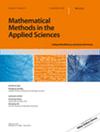Numerical and Theoretical Approximation Through Riemann–Liouville-Type Fractional Kantorovich Operators
IF 1.8
3区 数学
Q1 MATHEMATICS, APPLIED
引用次数: 0
Abstract
This paper presents the Riemann–Liouville-type fractional -Bernstein–Kantorovich operators based on a sequence . To establish the uniform convergence of these operators, we employ the Korovkin-type theorem, Lipschitz-type space, and modulus of continuity. Additionally, we demonstrate global approximation by utilizing the Ditzian–Totik modulus of smoothness. An approximation result related to the Korovkin theorem is also provided by using Fibonacci -statistical convergence. Finally, we illustrate the convergence of the proposed operators through graphical representations created using Maple.

riemann - liouville型分数阶Kantorovich算子的数值和理论逼近
本文给出了基于序列τ n $$ {\tau}_{\mathfrak{n}} $$的riemann - liouville型分数阶α $$ \alpha $$ -Bernstein-Kantorovich算子。为了建立这些算子的一致收敛性,我们使用了korovkin型定理、lipschitz -型空间和连续模。此外,我们利用平滑的Ditzian-Totik模证明了全局逼近。利用Fibonacci f $$ \mathfrak{f} $$ -统计收敛也提供了与Korovkin定理有关的近似结果。最后,我们通过使用Maple创建的图形表示来说明所建议的操作符的收敛性。
本文章由计算机程序翻译,如有差异,请以英文原文为准。
求助全文
约1分钟内获得全文
求助全文
来源期刊
CiteScore
4.90
自引率
6.90%
发文量
798
审稿时长
6 months
期刊介绍:
Mathematical Methods in the Applied Sciences publishes papers dealing with new mathematical methods for the consideration of linear and non-linear, direct and inverse problems for physical relevant processes over time- and space- varying media under certain initial, boundary, transition conditions etc. Papers dealing with biomathematical content, population dynamics and network problems are most welcome.
Mathematical Methods in the Applied Sciences is an interdisciplinary journal: therefore, all manuscripts must be written to be accessible to a broad scientific but mathematically advanced audience. All papers must contain carefully written introduction and conclusion sections, which should include a clear exposition of the underlying scientific problem, a summary of the mathematical results and the tools used in deriving the results. Furthermore, the scientific importance of the manuscript and its conclusions should be made clear. Papers dealing with numerical processes or which contain only the application of well established methods will not be accepted.
Because of the broad scope of the journal, authors should minimize the use of technical jargon from their subfield in order to increase the accessibility of their paper and appeal to a wider readership. If technical terms are necessary, authors should define them clearly so that the main ideas are understandable also to readers not working in the same subfield.

 求助内容:
求助内容: 应助结果提醒方式:
应助结果提醒方式:


